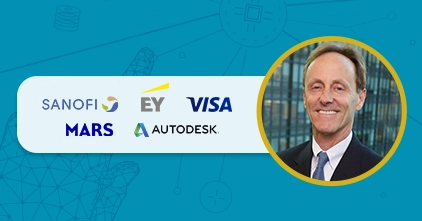As more people are entering the workforce and skills are becoming more specialized, how are HR professionals evolving their strategies to prepare their employees for the skills of tomorrow?

With the introduction of new technologies, there has been a noticeably rapid change of how people learn and work. Today’s workforce has become more agile and the marketplace has continuously innovated to keep up with the pace of the changing business landscape. Fortunately, agility is found to be the key to surviving in the age of technological hairpin turns. Thus, agility and digital transformation interweave perfectly together. As a matter of fact, 68% of companies identify agility as one of the most important initiatives in digitalization.
Today’s workforce: More agile than ever
More and more people are entering the workforce with constantly developing specialized skills. According to the Future Workforce HR 2018 report by Upwork, talent is getting increasingly hard to find as skills are evolving at an unprecedented rate. In fact, 61% of over 200 surveyed HR managers predict that the majority of jobs done today will not exist in 10 years. This poses a challenge for HR leaders as to what learning and development trends they’re taking to embrace a more flexible and adept workforce.
With old skills becoming outdated, technology evolving and globalization expanding our reach, learning leaders should be able to respond to new employees’ needs. The “internet of things” can actually pay dividends and create value for the business only if leveraged effectively. This begs the question: How are HR leaders honing employees’ skills set to also help propel the business forward? Here are some guidelines to maximize digital transformation in addressing the impending skills gap:
Evaluate what skills need to be honed
With an ongoing skills crisis, companies need to make sure to address these shortcomings head-on. Before introducing digital transformation to employees, it’s important to assess what the organization’s current skill set already is against those required by the digital initiative. In identifying what gaps are to be filled, it’s easier for decision-makers to plan out a roadmap of how they can reshape their company’s workforce. HR professionals should also take note that this isn’t limited to just technical skills but also soft skills. Because as much as technical skills play a large role in the market, soft skills should also be focused on they are needed more than ever as it is a key factor to success and makes the workplace engaged and productive.
Thriving in the digital age requires companies to rethink every aspect of their business and operating models. Adam O’Neill, managing director of Y Soft Australia, said that without effective planning for the resources needed to achieve the digital transformation, organizations can find themselves with a skills gap that delays transformation objectives. That being so, assess your employees’ capabilities and weaknesses so that corresponding measures may be taken to address their skill gaps. Who knows, some employees may be ripe for retraining, providing new opportunities for skills growth?
Define the digital strategy your organization needs
In the case of ANZ, a key player in the banking industry, although 57 percent of their CHROs have geared for digital transformation, most HR leaders still fall behind their global counterparts. This means that merely embracing digital changes in the workplace doesn’t necessarily guarantee top talent to arise. It also takes getting the right mix of strategies in your organization and L&D practices to effectively drive digital change. Thus, after determining what skills need refining or what skills need to be taught, the organization should come up with a plan as to what plan of action they have in response to the skill shortage.
Whether it’s introducing employees to new digital schemes in the workplace or rehashing internal processes, the approach that best suits your company and ultimately, the employees, is the way to go. Having a game plan of what steps will be taken to develop a workforce ready for the future, will more or less pave a way to your L&D success.
Provide relevant and continuous training through technology
Addressing the skills gap requires employers to provide ongoing training to help workers keep their skills and knowledge up-to-date. In retraining the existing workforce and hiring new talent, HR leaders should understand the importance of both technical and soft skills. The workplace is constantly progressing, and it’s alarming for employees to keep up with the pace of the new world, considering that the skills they already have might become obsolete in the future. Preparing employees for this change should start with employers’ learning and development practices. And through various e-Learning practices such as live coaching, microlearning, blended learning, eWriting, and other workplace learning trends, companies can harness both the technical and soft skills of their employees.
With digital transformation underway, organizations should leverage technology in the workplace. Better yet, it can also provide metrics to reveal the ROI of your corporate training efforts as well.
Addressing skills gap with digital transformation
With numerous learning trends, learning management systems and approaches, incorporating digitalization in an organization, and effectively implementing it in the long run can be overwhelming. Knowing the needs and preferences of the people in your organization is key to designing learning courses that will get the most out of your training efforts. It’s about time to consider the transcendence of your training and development trends to the digital sphere.
So, are you readying your workforce for the future?




